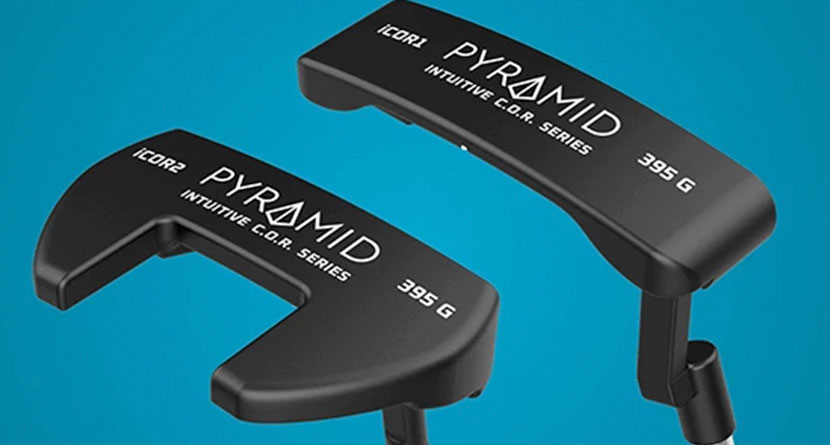What You Need To Know
- The Pyramid iCOR Putter is available as a blade or mallet, and comes in 33″, 34″ or 35″ lengths
- Features precision-milled gear effect grooved insert, iCOR speed correcting compound, stability weighting, eye-line milled alignment guide and no-taper grip
- Retails for $399.00; now available for $257.00. Comes in right-handed and left-handed dexterities
The advent of advanced statistics has been a great thing for golfers of all skill levels, but there’s no doubt the pendulum may have swung too far in one direction.
While ardent stat heads like to point to the importance of the long game, they unintentionally (or incorrectly) pour cold water on the short game, specifically putting. A common calling card is the “debunking” of drive for show and putt for dough.
The misnomer here is that while driving may have been undervalued in years past, putting is still incredibly important. How important, you may ask: it makes up about 40% of a golfer’s strokes per round across every handicap level. One club accounts for 40% of our strokes. I’d say that’s still pretty important.
With the stats lesson out of the way, we know the importance of having the right putter in the bag; one we can depend on and one that performs at its best even when we don’t, which is precisely what the Pyramid iCOR Putter was designed to do.

First Impressions
Like its predecessor, the Pyramid iCOR Putter’s superpower is its uniquely-designed putter face and it’s pyramid-shaped milling pattern that self-corrects mishits. That’s a pretty heady sentence to write – and we’ll get into the specifics a bit further down.
The difference between the OG Pyramid Putter and the iCOR is precisely that: the iCOR insert. The sweetspot of the putter now features aircraft-grade aluminum in front of a compound that boosts the Coefficient of Restitution. (The last time you might have heard the Coefficient of Restitution phrase was in reference to whether or not you should pull the flagstick when you putt.)
Basically what it boils down to is this with regard to the COR in the putter face: a higher COR means less energy loss on miss-hits. Additionally, this new insert gives the iCOR putter a much “softer” feel when stroking putts as opposed to the more “clicky” feel of its predecessor.
The iCOR also boasts a similar, albeit optimized non-taper grip as well that feels good in your hands.

On The Course
All the technology talk can make my head spin a bit, but there’s nothing difficult to understand when it comes to how the iCOR Putter performs on the course.
There’s not much to be said about the iCOR’s center-face strikes. The putter performs as well if not better than its $400-600 contemporaries, but where it truly exceeds expectations is on those less-than-perfect strokes.
And I’d argue the confidence gained from when you do mishit putts makes the center strikes more common (but admittedly, that could be some placebo on my end). As a consistent toe-putter, the iCOR’s ability to get the ball tumbling cannot be overstated.
Another equally beneficial characteristic is the consistent distance created by the iCOR insert. As you might expect, the longer the stroke, the more difficult it is to find the center of the face. This is an issue that plagues golfers of all ability levels, and knowing what we do about one-putt make percentages, every foot counts when it comes to eliminating 3-putts.
The Takeaway
Both the iCOR blade and mallet putters perform as advertised. You may not see as many of these on Tour, but that’s because off-center hits aren’t nearly the issue for the best players in the world as it is for the rest of us.
For me personally, between the iCOR insert and the redesigned winged mallet design, the iCOR is going to be a go-to putter for a long time.
The Pyramid iCOR Putter is available in blade or mallet styles at 33″, 34″ or 35″ in length. It retails for $399.00 each, but now is available for $257.00 and comes in right and left-handed dexterities. Visit Pyramid-Putters.com for more information.




